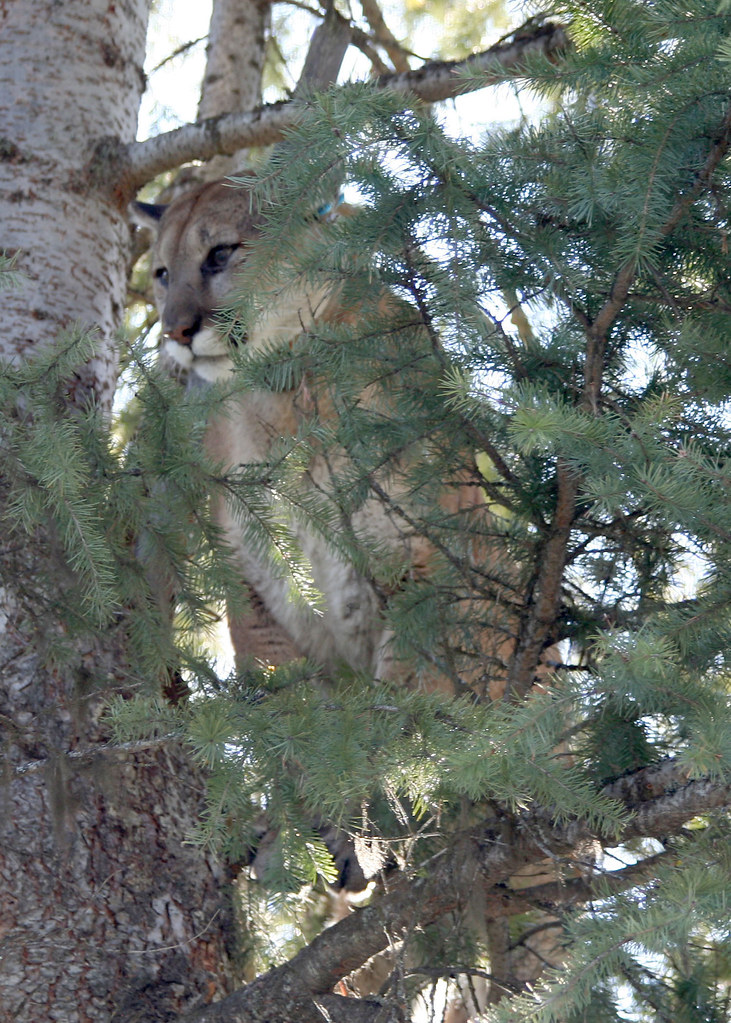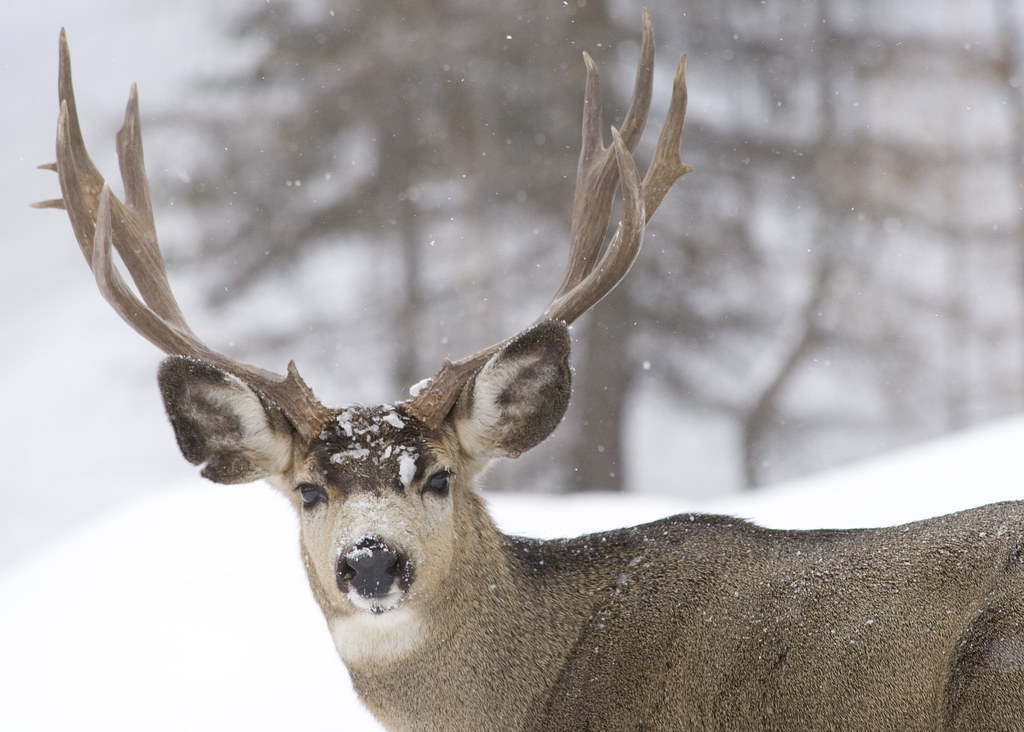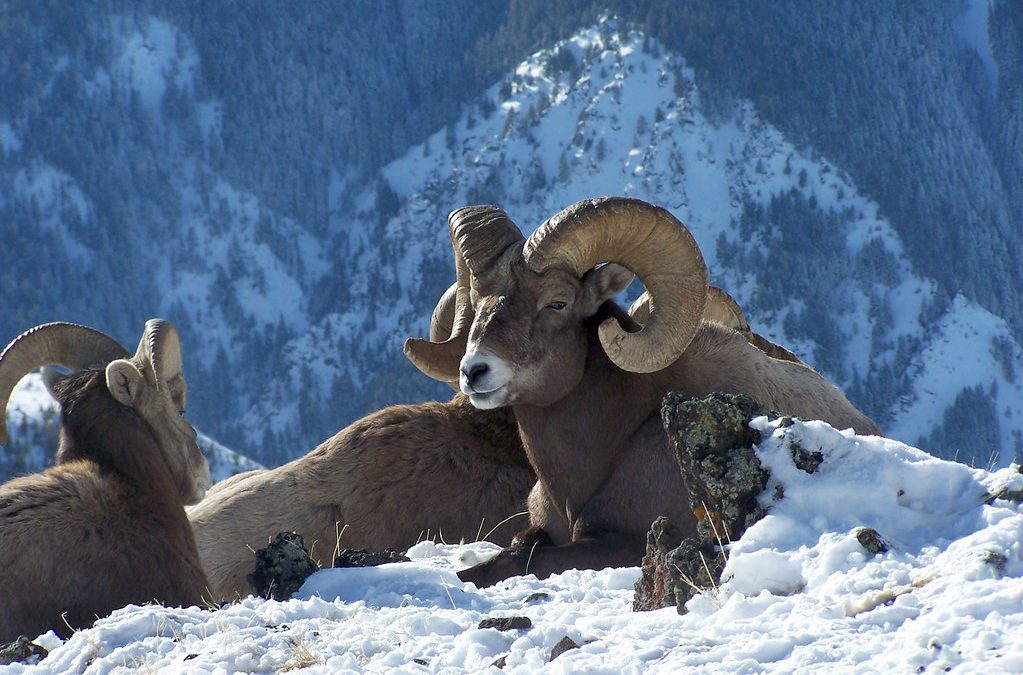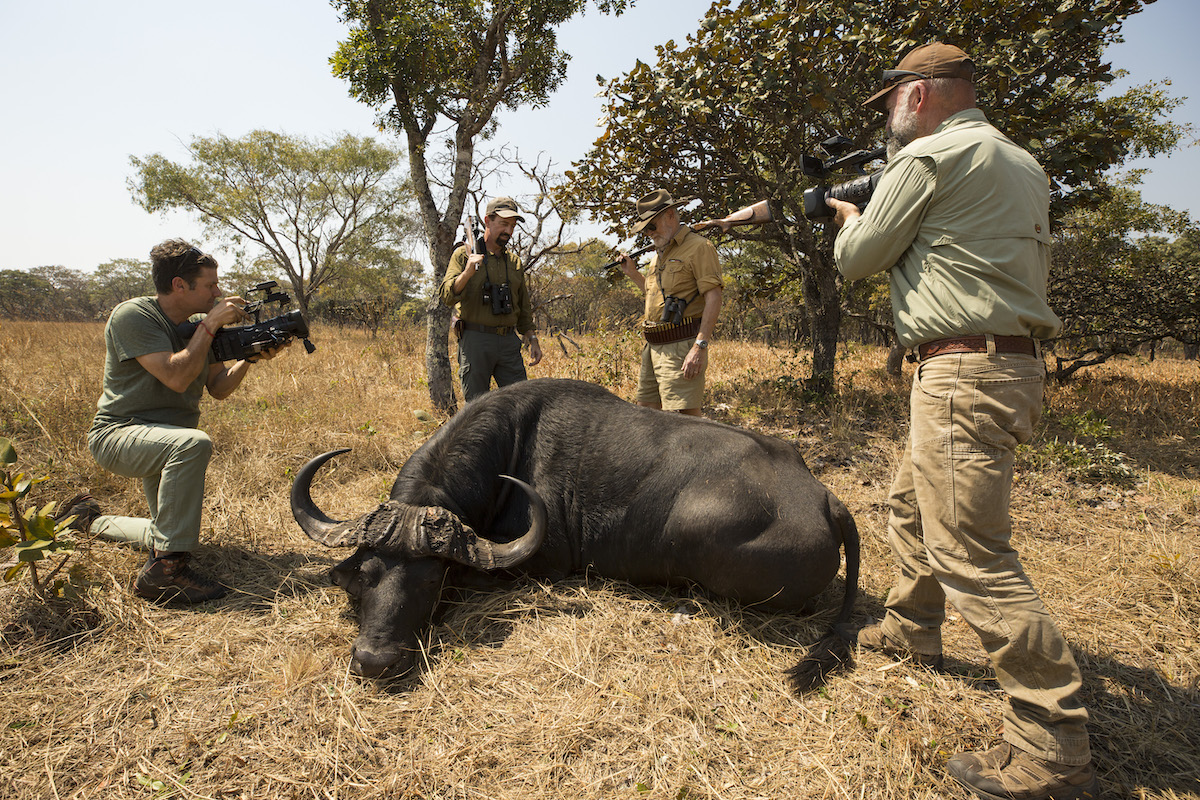
Treed cougar in the Sled Springs Unit, Oregon
1. When tagging game in Oregon, log in to the MyODFW app before you lose cell reception. The MyODFW app works without cell reception, but you need to be logged in for your profile to come up and to be able to use the app out of cell range.
Note that the original version of the app released in December 2018 automatically logged users out after six months. So, if you haven’t used the app in awhile you may need to login again — even if you never logged out. Forgot your username or password? Follow the system prompts on the ODFW Licensing System page to recover them, or contact ODFW by phone or email for help.
2. Update and sync your app before leaving cell range. Go to the Google Play store on Android devices or the App store on Apple devices. Update your MyODFW app or hit “Open” to be sure you have the latest version (currently 2.1.0 for Apple and 2.1.1 for Android). Once you’re logged in, click the three lines on the upper right corner and hit “Sync Account” to be sure the app is fully synced and has your latest information.
3. Try turning off your WiFi if you have problems tagging or opening app while in the field. If you’re connecting other peripheral devices (such as GPS or camera) through your phone’s wireless connection, you may need to disconnect your WiFi to validate your tag in the app. If you get a message that says “An error has occurred,” try turning off your WiFi. You can turn it back on once you’re done tagging.
4. Keep your phone charged with a portable charger or other method. Just like in previous years, hunters/anglers are required to have and display their license and tag to ODFW or OSP, when requested. If you chose electronic tagging, you need to have enough battery life (or an external battery source) so you can show your license or tag. Putting your phone in airplane mode will conserve battery life when out of cell range. Note that ODFW and OSP will also be able to access information about your licenses and tags while in the field and not in cell range.
5. Make sure kids have paper tags or their own smart phone. Each hunter/angler is required to carry their own license or tag, so young hunters/anglers need to have their own phone or tablet, or use paper tagging.

6. Don’t forget flagging tape, duct tape or some other material to “tag” your animal. If you’re using e-tagging, your first step is to validate the tag in the MyODFW app. Then, write down the confirmation number provided by the app, plus your name, ODFW ID, date of birth and harvest date on anything that will stand up to the elements (like flagging or duct tape). Affix it to the animal like a traditional tag and keep it attached to the carcass in transport. Hunters must still physically tag an animal so they can be visually identified by OSP and other hunters. See page 16 of the 2019 Oregon Big Game Regulations for more information on tagging.
7. Be sure to “buy” your their tag before your hunt, even if you have a Sports Pac. The tag sale deadline is always the day before the hunt begins for big game hunts (and Sept. 27 to purchase a bear or cougar tag). See how-to video on how to pick up your voucher tag. Sports Pac holders still need to pick up their controlled or general season tag before the deadline. The tag won’t cost anything, but you’ll still need to “purchase” it by visiting a license sales agent or logging in to your account and going through purchase steps.
8. Protect paper licenses/tags in a plastic bag or other waterproof container. Lost licenses can be reprinted if you have an online account, but if you lose your tag, you must visit an ODFW office or license sales agent and pay $2 for a reprint. The new tag will have a new barcode and your old tag will be invalid.
9. Consider these additional tips when using paper tags: Fill out as much of the tag as you can ahead of time – name, ODFW ID number, date of birth, etc. Keep both the tag and a pen in the same bag, one that’s big enough to stick your hand in. That way, if it’s wet or raining you’ll be able to complete the tag without taking in out of the bag. Attach the completed tag, in its plastic bag, to the antler, horn or leg of the animal, just as you’ve done in the past.




